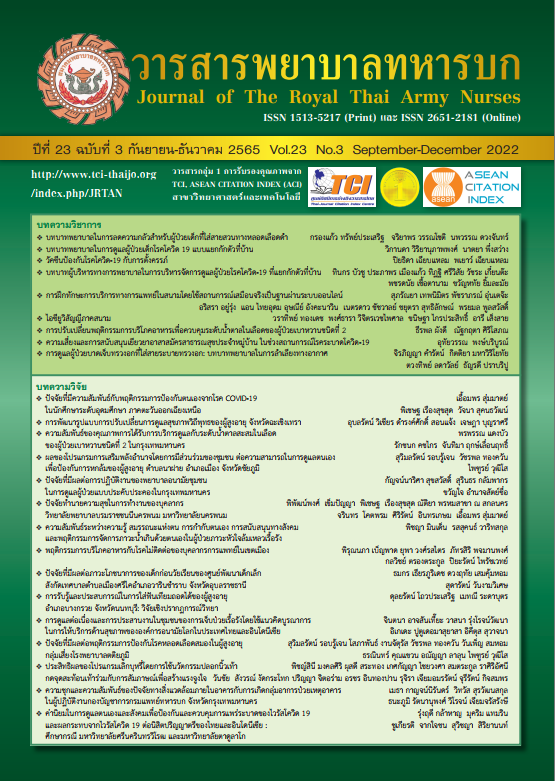An Anesthesia Field ICU
Keywords:
Field hospital, Field intensive care unit, Coronavirus-19, AnesthesiaAbstract
Promptly, a field intensive care unit has been set up amidst a natural disaster or the world’s catastrophe as the severe acute respiratory syndrome coronavirus-19 pandemic. to support the spread of severe disease. outbreak People with severe lung infections leading to respiratory failure (ARDS) requiring NMBA, along with sedatives to increase blood oxygen levels. There were no more complications related to muscle weakness. By means of good management regarding a designated area is classified into rooms for medical supplies, preparation and personal protective equipment, airborne infection isolation, admission and discharge patients. the appropriateness of human resources and healthcare budget as well as the innovative.
During the coronavirus disease 2019 outbreak, may be postponed severe cases of patients undergoing surgery are not urgent. Must require workers to be fully vaccinated according to the criteria. and if there is a history of exposure to the disease. Be tested and undergo rigorous quarantine. Anesthetized personnel when free from burden. One of the caregivers of patients. which is the main function of supporting the respiratory system. Including airway assessment intubation and setting up a ventilator as well as the heart and circulatory system. It is necessary to know the management system. Take care of it according to the principles of preventing the spread of infection. Under the supervision of a medical professional for the benefit of the public.
Downloads
References
Army Mobile Surgical Hospital (MASH): Military Heritage and Surgery”. Journal of the National Medical Association.2005. 97 (5): 650–651 .
Dan R Thompson. Guidelines for intensive care unit design. 2012;40(5):1586-600.
Phutharangsi S, Boonto C, Chaleoykitti S.Health Behaviors, Health workplace and Happy Life among Healthcare Providers in the 21st Century. Journal of The Royal Thai Army Nurses. 2015;16(2):8-14. (in Thai)
Prioritisation of ICU treatments for critically ill patients in a a COVID-19 pandemic with scarce resources. Anaesth Crit Care Pain Med. 2020 Jun; 39(3): 333–339.
Guidelines for intensive care unit admission, discharge, and triageTask Force of the American College of Critical Care Medicine, Society of Critical Care Medcin. Intensivmed Crit Care Med. 1999;27(3):633-8.
Guidelines for developing admission and discharge policies for the pediatric intensive care unit. American Academy of Pediatrics. Committee on Hospital Care and Section of Critical Care. Society of Critical Care Medicine. Pediatric Section Admission Criteria Task Force. Pediatrics. 1999;103 : 840-2
Maccioli GA .Clinical practice guidelines for the maintenance of patient physical safety in the intensive care unit: use of restraining therapies-American College of Critical Care Medicine, Society of Critical Care Medicine. Crit Care Med. 2003;31(11):2665-76.
Monzón Marín JL, Couceiro Vidal A .Considerations on ICU triage ethics during the COVID-19 pandemic. Med Intensive. 2021;45(6):381-382.
Guidelines ICU in COVID-19. COVID-19 decontamination and reuse of filtrating. CDC:2020
Guidelines COVID-19. The Royal College Of Anesthesiologists Of Thailand. 2020(15);1-8.
Kamming D, Gardam M, Chung F, Anaesthesia and SARS, BJA; 2003; 90(6): 715-18.
Downloads
Published
How to Cite
Issue
Section
License
Copyright (c) 2022 Journal of The Royal Thai Army Nurses

This work is licensed under a Creative Commons Attribution-NonCommercial-NoDerivatives 4.0 International License.
บทความหรือข้อคิดเห็นใดใดที่ปรากฏในวารสารพยาบาลทหารบกเป็นวรรณกรรมของผู้เขียน ซึ่งบรรณาธิการหรือสมาคมพยาบาลทหารบก ไม่จำเป็นต้องเห็นด้วย
บทความที่ได้รับการตีพิมพ์เป็นลิขสิทธิ์ของวารสารพยาบาลทหารบก
The ideas and opinions expressed in the Journal of The Royal Thai Army Nurses are those of the authors and not necessarily those
of the editor or Royal Thai Army Nurses Association.






